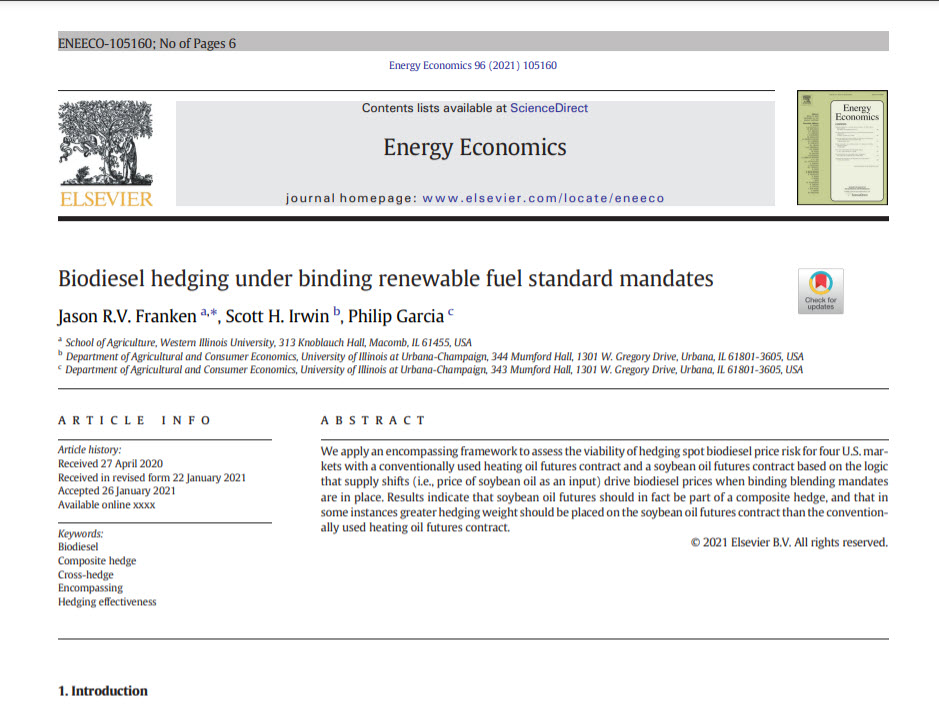
1. One more quick thread on the biodiesel hedging article. This one is directed to grad students and other researchers looking for interesting problems to dig into. I am asked more than you think, "How do you find interesting research topics?" 

2. Well to start with, I am an applied economist. Very applied. To find interesting applied economic research problems I think you have to be engaged with the relevant industry and part of the ongoing conversation.
3. I used to do this by reading a lot of trade magazines but now I get pretty much a 24/7 flow of engagement on twitter. But there is a trick. I am interested in what people in the industry are saying and talking about, not necessarily what other academics are saying.
4. Not saying that academic research conversations are unimportant, just that ya gotta get out of the academic bubble if you are going to figure out where the interesting research problems are to be found.
5. Here I want to give a shout out to twitter. I find it incredible what I can learn in an hour a day. Thanks to each and every one of you who ask me questions and comment on what I am tweeting out. This is now the starting point for much of my research.
6. I will often go from something I saw on twitter to writing a farmdoc daily article. I am now finding myself writing more and more journal articles based on FDD articles. The biodiesel hedging article is one, and my recent AJAE article on D4 RIN pricing is another.
7. I think this is the "wired" version of a 21st century applied economist. It certainly works for me. I have so many more interesting research ideas than I can ever work on, and a big reason for that is twitter.
8. Finally, the sweet spot for my research writing is FDD. I love writing that style of article. I call it "first draft economics." The platform gives me a chance to put out practical research very fast, and the feedback is fast too!
• • •
Missing some Tweet in this thread? You can try to
force a refresh






